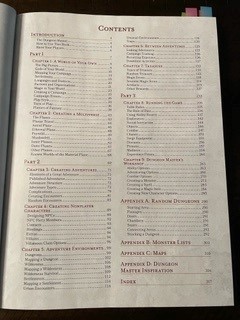Why You Don’t Need the Dungeon Master’s Guide to be a Good DM
Imagination, Improv and intrigue make a good DM

You want to start playing D&D but none of your friends want to be the Dungeon Master (DM). Don’t worry, you got this. You bought the Dungeon Master’s Guide but reading, memorizing, and completely grasping 224-pages of detailed content is overwhelming. You don’t need the DM’s guide to be a good DM. You simply need to have a Player’s Handbook and an understanding of what can happen in a turn and you’re good to go.
Sure, others will tell you the DM’s guide is a core book, foundational to running the game. Yes and maybe, but the Dungeon Master’s Guide is a tool for when you get a hang of running sessions. It is a great resource for world-building, magic items, and other cool components for running D&D but you don’t really need it. Yep, I said it. I rarely use it during sessions and if I do it’s for the magic items that the PCs earn or find during their quests. Others will argue the DM’s guide isn’t really an ‘in session’ book like the Player’s Handbook or Monster Manual, and I will agree with that. The Dungeon Master’s Guide is a resource for before sessions and for building your own Homebrew campaign, which I am a big fan of creating.
To run a campaign and for the players to have fun you need these 4 things:
- Player’s Handbook
- Monster Manual
- Dice
- Story hook and setting
To add some depth to your game and enhance the in-person experience I also recommend:
- Battleboard
- Minis
- Music – music really adds to the imersive experience
You can easily get intimated by watching ‘Critical Role’ and think, how can I afford or do all of those cool things? Don’t worry about that, just start with the basics and you can eventually evolve to a point where you have more tools to enhance the in-person experience.
If you did buy the Dungeon Master’s Guide, some areas I would consider using Part 1, chapters 1 and 2. It will give you some details on creating your own campaign and adventure settings and give you the tools to get as in-depth as you want to go. The other area to look into is how you run XP – experience points. We will have a blog post on this but the image below shows how you can distribute XP by difficulty level of encounter.



Some really fantastic information, Gladiolus I found this. “Traffic signals in New York are just rough guidelines.” by David Letterman.
May I simply say what a comfort to uncover somebody that actually understands what theyre talking about on the internet. You definitely realize how to bring an issue to light and make it important. A lot more people ought to check this out and understand this side of the story. I cant believe you are not more popular since you definitely possess the gift.
you have a great blog here! would you like to make some invite posts on my blog?